
Your company has written its emails, perhaps a newsletters, or promo offer, or even an invoice. No response, and it turns out that your customer didn’t see it; either it went to spam or it didn’t even go into their mailbox. It can be very frustrating, and there isn’t an easy fix, but there are certainly things we can do to improve it’s chances of getting through. Here are the main reasons why it’s happening.
1. It’s a setup or programming or bug

This could be happening because of bad setup or code, and usually happens either when your server was initially set up, or when there’s a software upgrade.
Actions to take:
- Check the DNS and your server settings
- Ask your programmer to check their code. Can happen if they made a recent update, or if the software was upgraded
- If it’s a CMS plugin, check if you’re using the latest update and if other people using it are encountering the same issue.
2. Incorrect or missing email authentication protocols (SPF, DKIM, and DMARC)
Here’s how good email headers look like:
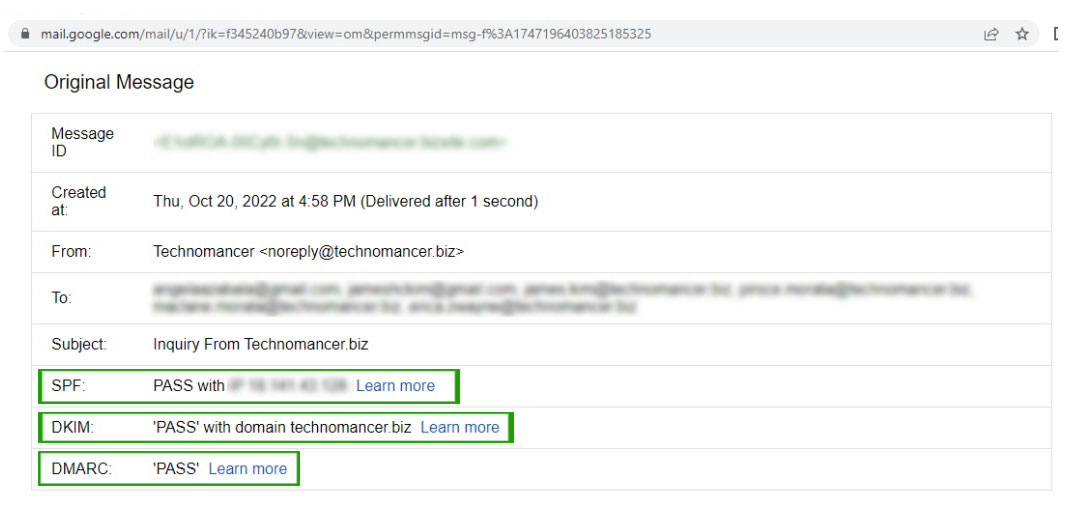
Here’s how bad email headers could look like, either because the authenticators are missing,
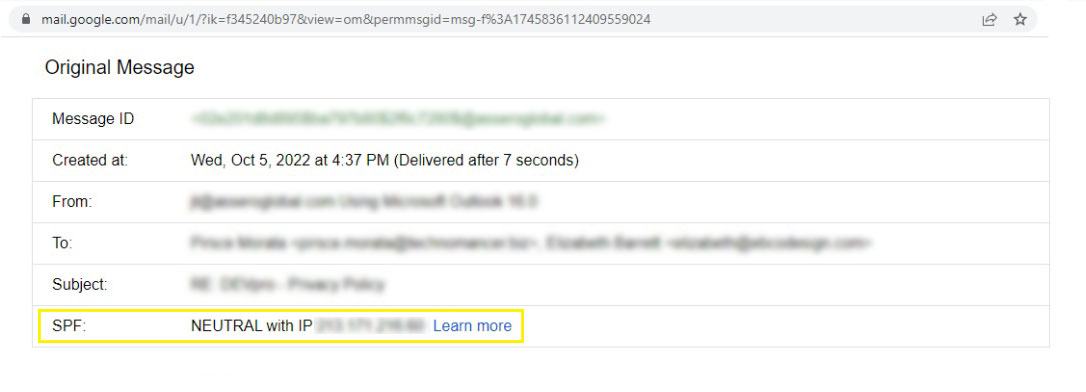
and/or wrong:
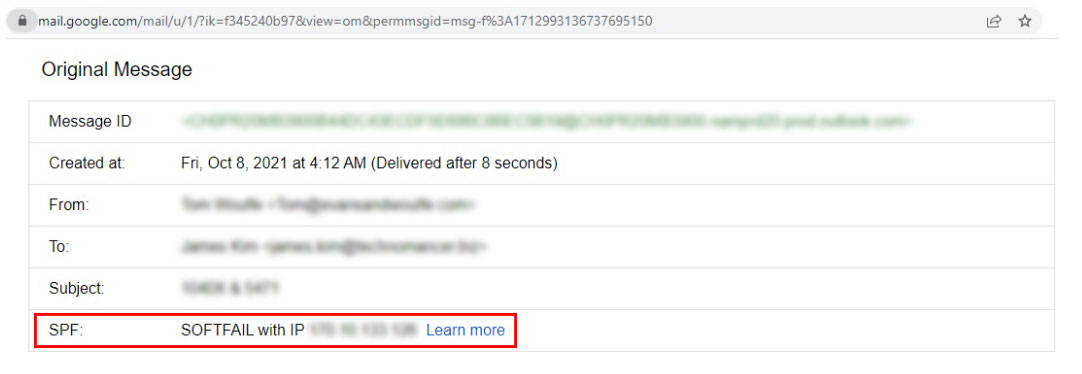
On GMail, if you have incorrect authenticators, your email will appear with a warning symbol instead of the standard picture or initials, even when the person can see the email

You can view the email headers on GMail by clicking the menu on the email, and choosing “Show original”
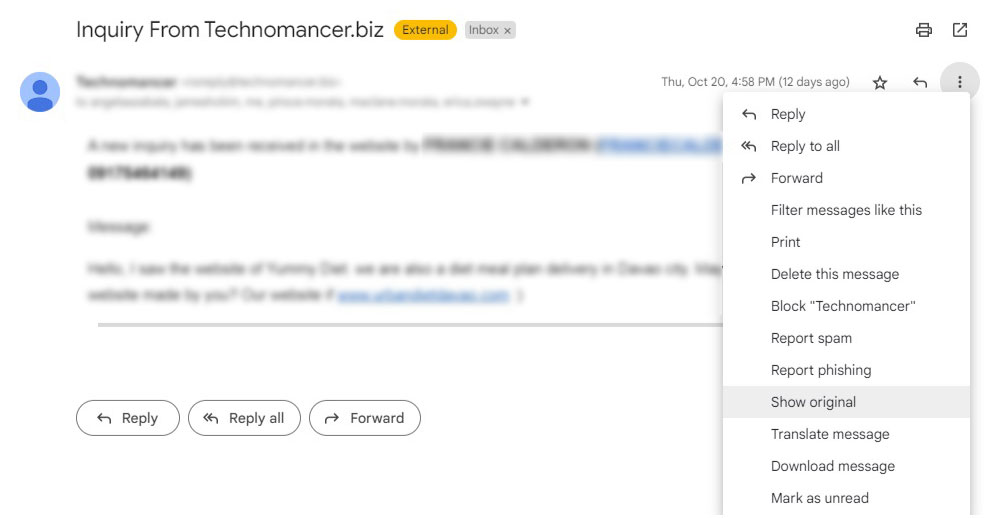
Actions to take:
- Failing these authenticators will increase the likelihood emails won’t go through
- Fixing these require DNS and server configuration changes
3. Your email is spammy

Popular email spam filtering software checks the likelihood of an email being spam is by checking the keywords and content, and your email can be blocked if it’s what’s considered to be too “spammy”. Words like “enlargement”, “sale”, “amazing offer”, “singles in your area”, “money back”, etc. The algorithm learns, based on what users mark as spam on their server. It also tends to consider spam emails with a lot of pictures and images, but no real message. For example, if every email going into a server has the word “bitcoin” on it, other emails with that word will be more likely to be considered spam.
Actions to take:
- Check your spammyness score via free and popular tools (see the image above)
- Note that each server is unique due to variant user behavior, but this could still be a good litmus test
4. Your domain or server is on a blacklist.
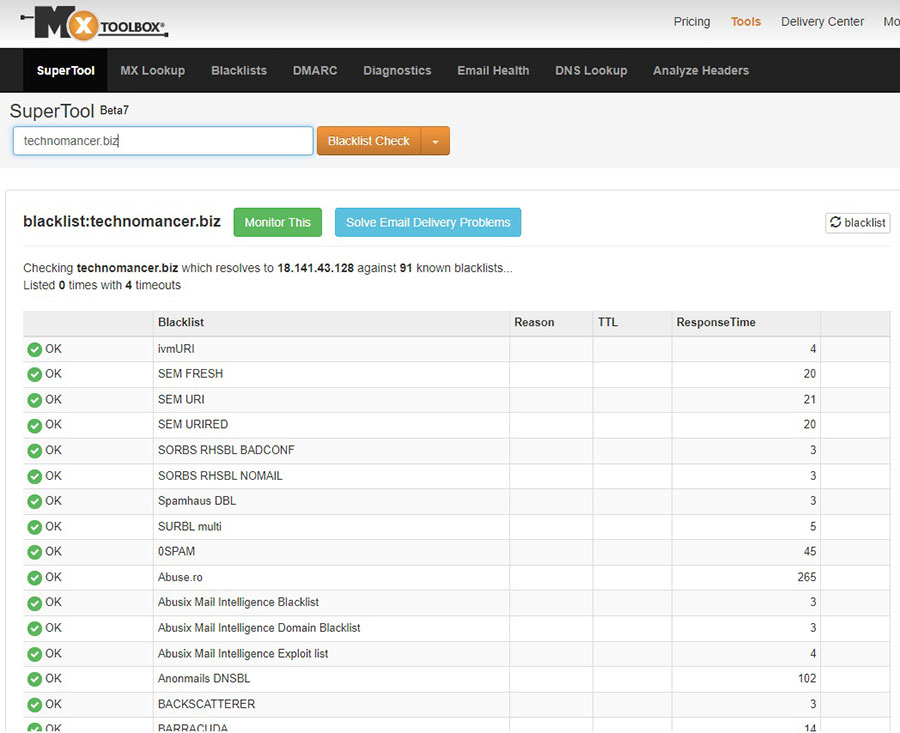
There are spam blacklists out there that contain domains and IP addresses of known spammers. Spammers will typically buy a server/IP address, then use it to send a ton of spam. Once its IP reputation is shredded, they’ll just move on a fresh, new server.Of course, anyone using the previous server/IP address will have to suffer the email reputation damage.
You could be on a blacklist if:
- Enough people or mail server algorithms mark your emails as spam
- You inherited the server/IP address of a previous spammer
- If you’re on the same server/IP address with other spammers (guilty-by-association)
- If you’re using the same hosting provider as other spammers (guilty-by-association, rarer, but it can happen
Actions to take:
- Go on the blacklist’s server and appeal your appearance on the blacklist. You can usually fill out an exemption form or send an email. They usually respond in a few weeks.
- Some blacklists might require payment to be removed from the blacklist. Though at this point, we consider that extortion
- Switch servers/IP address/hosting providers. If you have a poor email reputation, do what the spammers do and move to a cleaner server/IP address/hosting provider..
5. Receiving server has marked your email as spam
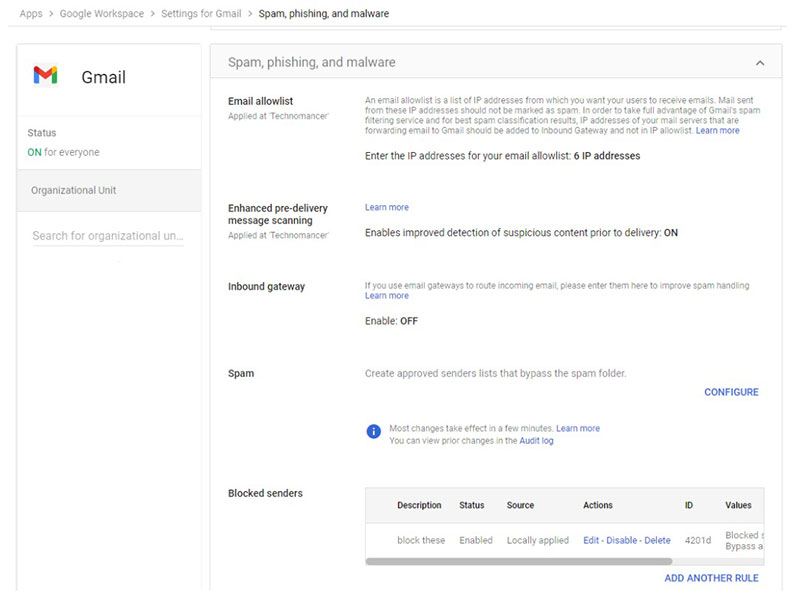
The receiving email server could have custom rules and blacklists. It can be programmed to be more or less aggressive on spam. It also has a concept called whitelists. All emails mentioned on the whitelist should be allowed through, regardless of the other rules.
There are also logs of emails that are marked as spam by the user or the server that can be used for investigation.
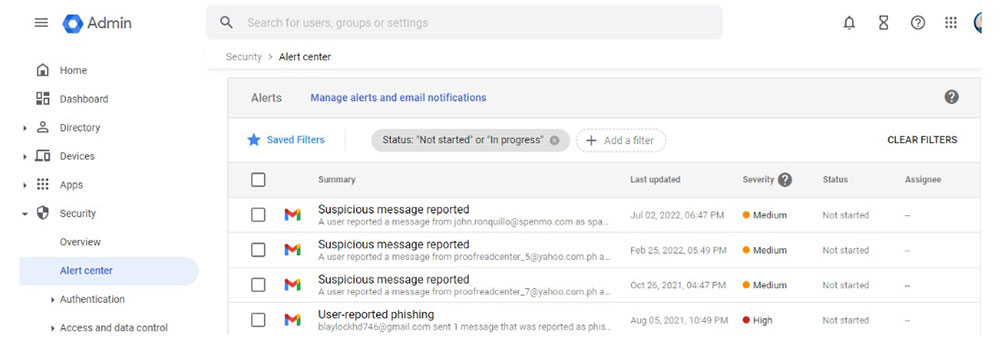
Actions to take:
- The challenge is gaining access to these admin logs. They require the client’s email server’s administrator to go over the logs to verify and/or make changes
- Not possible on generic free email services; these do not provide server admin access to users. Typically only business email allows this..
- Depending on the reason email is blocked (blackslist, spammy, etc), make the appropriate change so that the email is no longer blocked
- If possible, the receiving email server can just add your emails IP address or domain name to the whitelist, which should bypass all other blocks
6. Receiving person has marked your email or similar emails as spam
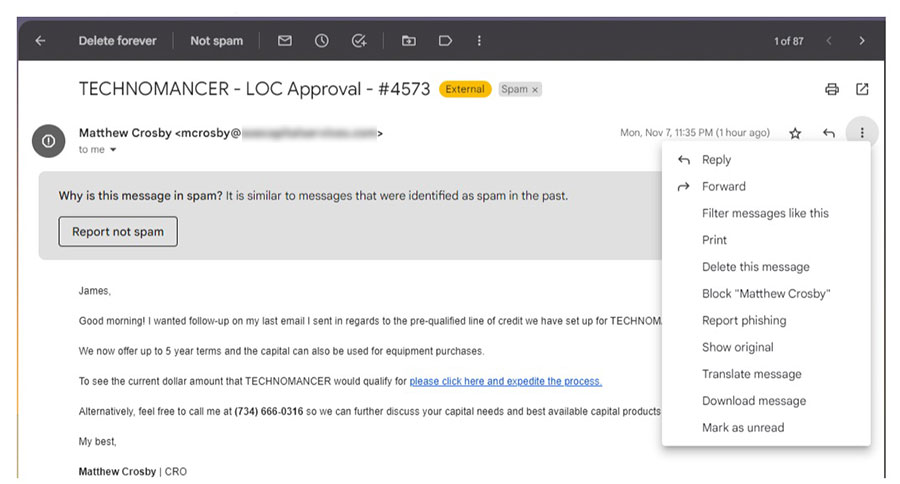
The final reason the email could be marked as spam is because you mark such emails as spam. If you mark every email from Technomancer as spam, it’s more likely future emails from Technomancer will be marked as spam. This has more to do with the individual user’s habits, which the email server algorithm is learning from.
Actions to take:
- The challenge is that these are actions taken by the receiving user. You will need a cooperative recipient to help investigate.
- If possible, find the email in the spam folder and “Report not spam”.
- The recipient can also send an email to you, which you should then reply to. Hopefully, this will teach the mail server algorithm that emails to each other should be allowed through.
7. Conclusion

Overall, this can be an easy or difficult thing to investigate and resolve, depending on what the problem is. It can take a couple of hours to investigate the common causes, and much more if the problem is with the receiving recipient’s email and/or email server. But, like all programming problems, this is all very solvable if you take things step-by-step and, if needed, cooperative email recipients to help the investigations.





